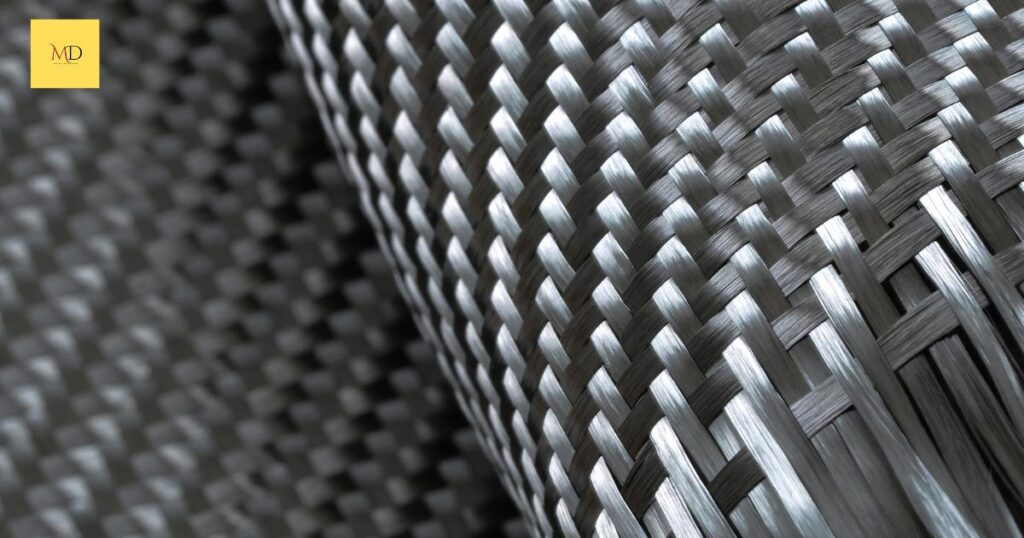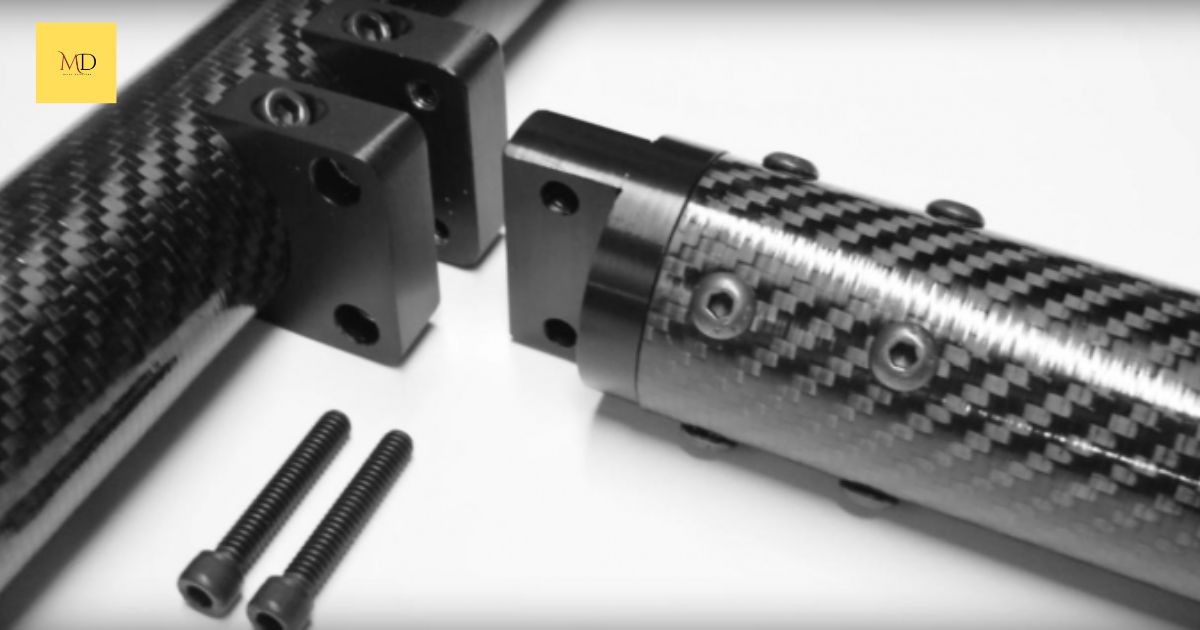Metal detectors are electronic devices that identify the presence of metal objects. They emit a magnetic field and detect disruptions caused by metal. Commonly used in security checks, these devices help identify potentially harmful items like weapons.
Curious about the stealthy nature of carbon fiber? Ever wondered if it can outsmart metal detectors? Well, prepare to be intrigued We’ve got the answer to the burning question: Does Carbon Fiber Set Off Metal Detectors? Unravel the mystery and discover how this lightweight wonder might just be your secret weapon in navigating security checkpoints hassle-free.
No, carbon fiber does not set off metal detectors. Unlike metal, carbon fiber is non-metallic and doesn’t interfere with the electromagnetic fields generated by metal detectors. This makes it a popular choice for items like certain tools, accessories, and even components in sports equipment, offering strength without the inconvenience of triggering security alarms.
How Metal Detectors Work
Metal detectors operate based on the principle of electromagnetic induction. These devices consist of a coil of wire through which an electric current is passed, creating a magnetic field. When the metal detector is brought near a metallic object, it disrupts the electromagnetic field, causing the detector to emit an alert signal. This is the fundamental mechanism used in various types of metal detectors, whether they are handheld devices for security checks or larger units used in activities like treasure hunting or archaeology.
The sensitivity of a metal detector is determined by factors such as the size and type of the metal object, as well as the distance between the detector and the object. Different metals also have varying effects on the detector’s electromagnetic field, allowing operators to distinguish between types of metals. In summary, the detection process relies on the interaction between the magnetic field created by the metal detector and the conductivity of the metal being detected, making it a versatile technology used in a range of fields for security, exploration, and even recreational purposes.
Principles of Metal Detection
Metal detection relies on the fundamental principles of electromagnetic induction. When a metal object passes through the electromagnetic field generated by a metal detector, it disrupts the field, causing the device to send out signals or alarms. This interaction is based on Faraday’s law of electromagnetic induction, which states that a change in magnetic field within a closed loop induces an electromotive force (EMF) in the conductor. In the context of metal detectors, the disturbance caused by metal objects triggers this change, allowing the device to identify and alert users to the presence of metal.
The sensitivity of metal detectors is finely tuned to distinguish between different types of metals based on their conductivity and magnetic permeability. This ability to discriminate between metals makes metal detectors versatile tools in various fields, from security applications to archaeological digs. By understanding the principles of electromagnetic induction, we can appreciate how these devices play a crucial role in identifying and locating metal objects in a wide range of environments.
Electromagnetic Fields and Interference
Electromagnetic fields play a crucial role in the functioning of metal detectors. When activated, these devices emit a magnetic field that interacts with metallic objects in their vicinity. The interaction causes a disturbance in the electromagnetic field, triggering an alert or alarm. Understanding this principle is essential to comprehend how metal detectors can identify and locate metals, ensuring security in various settings such as airports, public venues, and events.
However, electromagnetic fields are not without their challenges. Interference can arise from various sources, potentially affecting the accuracy of metal detectors. Factors like nearby electronic devices, power lines, or even environmental conditions may disrupt the electromagnetic field, leading to false alarms or missed detections. Researchers and engineers continually work to enhance the reliability of metal detectors by minimizing interference and improving their ability to distinguish between harmless environmental factors and actual metal threats.
Carbon Fiber vs. Metal Detectors

Carbon fiber and metal detectors engage in a silent dance at the intersection of technology and material science. Unlike metals, carbon fiber, composed of carbon atoms bonded together in a crystalline structure, lacks the electrical conductivity that typically triggers metal detectors. This non-metallic advantage makes carbon fiber an attractive choice for various applications where stealth and lightweight strength are paramount.
In practical terms, items made of carbon fiber, such as certain tools, accessories, or components in sports equipment, can effortlessly navigate through security checkpoints without setting off alarms. This characteristic has led to the integration of carbon fiber in everyday items, offering users a blend of durability and convenience. The coexistence of carbon fiber and metal detectors showcases the adaptability of materials in the face of evolving technology, providing a seamless experience for individuals seeking both security and innovation in their daily lives.
The Non-Metallic Advantage
The non-metallic advantage of materials like carbon fiber plays a crucial role in various applications, particularly in the realm of security. Unlike traditional metals, carbon fiber is not detected by metal detectors due to its non-conductive and non-magnetic properties. This characteristic makes it an ideal choice for items where stealth and lightweight design are paramount, such as in aerospace, sports equipment, and certain tools. The non-metallic advantage not only facilitates the creation of efficient and inconspicuous products but also allows individuals to move seamlessly through security checkpoints without triggering alarms.
In addition to its role in security, the non-metallic advantage of carbon fiber contributes significantly to the overall advancement of technology. Industries ranging from automotive to medical have embraced carbon fiber for its strength-to-weight ratio and durability. This material allows for the creation of lighter and more fuel-efficient vehicles, as well as innovative medical devices that benefit from its non-interference with magnetic fields.
Why Carbon Fiber Doesn’t Trigger Alarms
Carbon fiber doesn’t trigger alarms in metal detectors due to its unique composition. Unlike metals, carbon fiber is a non-metallic material made from tightly woven carbon strands. These strands are extremely lightweight yet possess remarkable strength, making carbon fiber a popular choice in various industries, from aerospace to sports equipment. The absence of metal in its composition means that carbon fiber doesn’t interfere with the electromagnetic fields generated by metal detectors, allowing objects made from this material to pass through security checkpoints without setting off alarms.
In practical terms, the non-conductive nature of carbon fiber plays a key role in its stealthiness during security screenings. Metal detectors work by sensing disruptions in electromagnetic fields, and since carbon fiber doesn’t conduct electricity like metals do, it doesn’t register as a threat. This unique property has not only expanded the use of carbon fiber in various applications but has also become a sought-after feature for individuals looking to travel or navigate security-sensitive areas without the hassle of triggering alarms.
FAQ’S
Do metal detectors detect carbon fiber?
No, metal detectors do not detect carbon fiber. Carbon fiber is a non-metallic material, and metal detectors operate by sensing the conductivity of metals.
What metal will not set off a metal detector?
Non-ferrous metals, such as aluminum, copper, and brass, typically do not set off a metal detector.
Can a metal detector detect carbon paper?
No, a metal detector cannot detect carbon paper.
Conclusion
The world of carbon fiber and metal detectors reveals a fascinating interplay between material science and security technology. The lightweight, non-metallic nature of carbon fiber emerges as a unique advantage, allowing objects made from this material to effortlessly bypass metal detectors without triggering alarms. This characteristic has opened up new possibilities in various industries, from crafting cutting-edge sports equipment to designing everyday items that seamlessly blend strength with convenience.
As we navigate through security checkpoints in our daily lives, understanding why carbon fiber doesn’t set off alarms provides insights into the intricacies of modern detection systems. It highlights the adaptability of materials in meeting both strength and security requirements. The silent passage of carbon fiber through metal detectors underscores the importance of technological advancements in creating a harmonious balance between innovation and safety.











